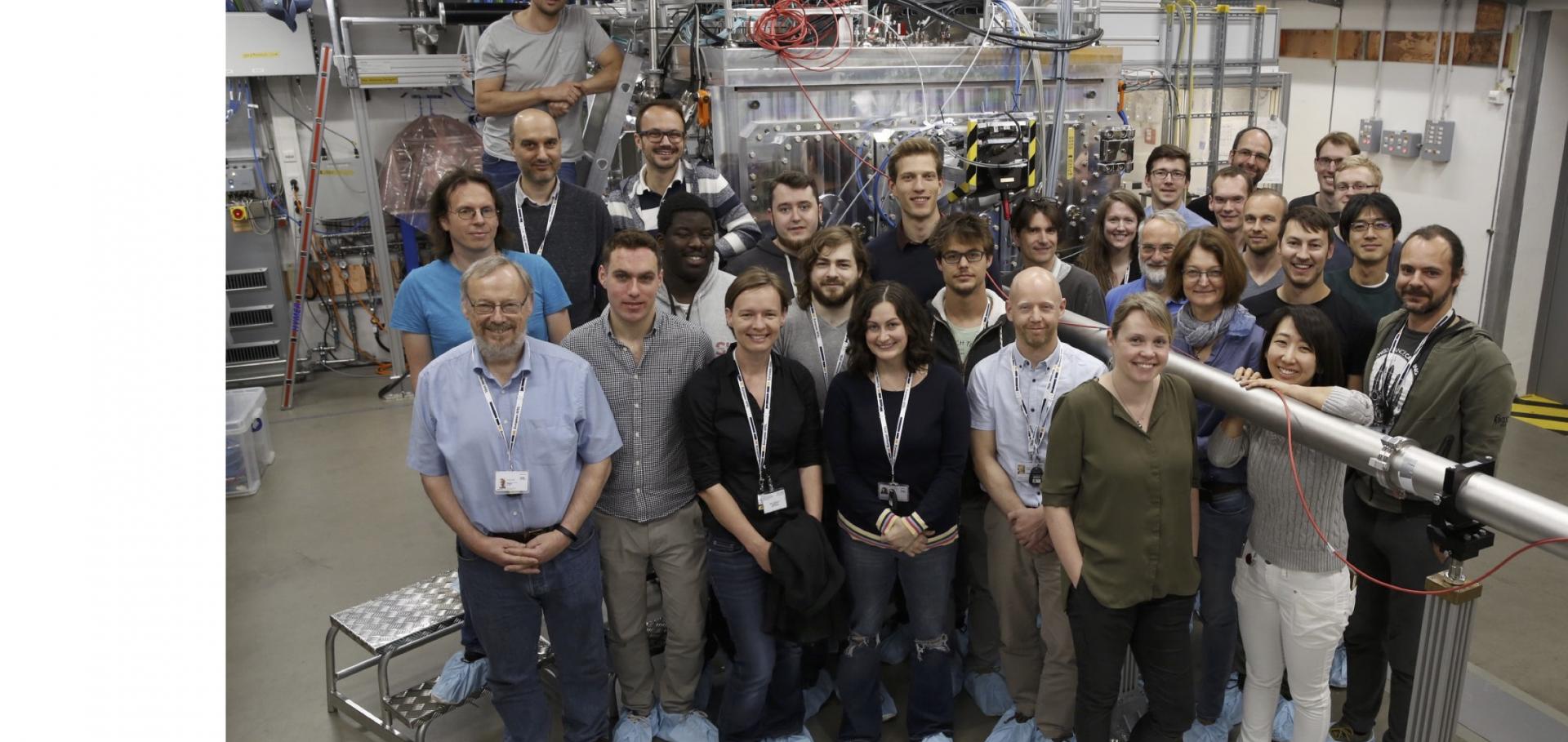Ultrafast laser-matter interaction with nanostructured targets
X-RAY LASERS AND COHERENT X-RAY SOURCES: DEVELOPMENT AND APPLICATIONS XIII 11111 (2019)
Femtosecond diffraction studies of solid and liquid phase changes in shock-compressed bismuth
Scientific Reports Springer Nature Publishing Group 8 (2018) 16927
Abstract:
Bismuth has long been a prototypical system for investigating phase transformations and melting at high pressure. Despite decades of experimental study, however, the lattice-level response of Bi to rapid (shock) compression and the relationship between structures occurring dynamically and those observed during slow (static) compression, are still not clearly understood. We have determined the structural response of shock-compressed Bi to 68 GPa using femtosecond X-ray diffraction, thereby revealing the phase transition sequence and equation-of-state in unprecedented detail for the first time. We show that shocked-Bi exhibits a marked departure from equilibrium behavior - the incommensurate Bi-III phase is not observed, but rather a new metastable phase, and the Bi-V phase is formed at significantly lower pressures compared to static compression studies. We also directly measure structural changes in a shocked liquid for the first time. These observations reveal new behaviour in the solid and liquid phases of a shocked material and give important insights into the validity of comparing static and dynamic datasets.Phase transition lowering in dynamically compressed silicon
Nature Physics Springer Nature 15 (2018) 89-94
Abstract:
Silicon, being one of the most abundant elements in nature, attracts wide-ranging scientific and technological interest. Specifically, in its elemental form, crystals of remarkable purity can be produced. One may assume that this would lead to silicon being well understood, and indeed, this is the case for many ambient properties, as well as for higher-pressure behaviour under quasi-static loading. However, despite many decades of study, a detailed understanding of the response of silicon to rapid compression—such as that experienced under shock impact—remains elusive. Here, we combine a novel free-electron laser-based X-ray diffraction geometry with laser-driven compression to elucidate the importance of shear generated during shock compression on the occurrence of phase transitions. We observe lowering of the hydrostatic phase boundary in elemental silicon, an ideal model system for investigating high-strength materials, analogous to planetary constituents. Moreover, we unambiguously determine the onset of melting above 14 GPa, previously ascribed to a solid–solid phase transition, undetectable in the now conventional shocked diffraction geometry; transitions to the liquid state are expected to be ubiquitous in all systems at sufficiently high pressures and temperatures.Comments on A new theory for X-ray diffraction
Acta Crystallographica Section A: Foundations and Advances International Union of Crystallography 74:5 (2018) A74
Abstract:
In an article entitled A new theory for X-ray diffraction [Fewster (2014). Acta Cryst. A70, 257–282], hereafter referred to as NTXRD, it is claimed that when X-rays are scattered from a small crystallite, whatever its size and shape, the diffraction pattern will contain enhanced scattering at angles of exactly 2B, whatever the orientation of the crystal. It is claimed that in this way scattering from a powder, with randomly oriented crystals, gives rise to Bragg scattering even if the Bragg condition is never satisfied by an individual crystallite. The claims of the theory put forward in NTXRD are examined and they are found to be in error. Whilst for a certain restricted set of shapes of crystals it is possible to obtain some diffraction close to (but not exactly at) the Bragg angle as the crystallite is oriented away from the Bragg condition, this is generally not the case. Furthermore, contrary to the claims made within NTXRD, the recognition of the origin of the type of effects described is not new, and has been known since the earliest days of X-ray diffraction.Observed proton beam induced disruption of a tungsten powder sample at CERN
Physical Review Accelerators and Beams American Physical Society (APS) 21:7 (2018) 073002


